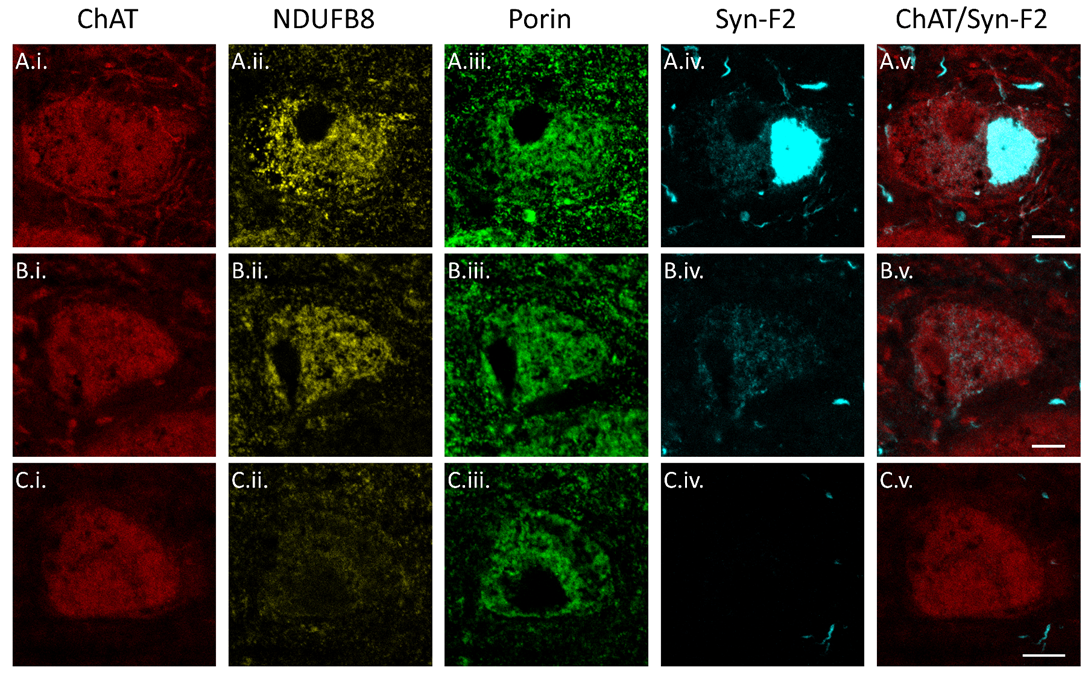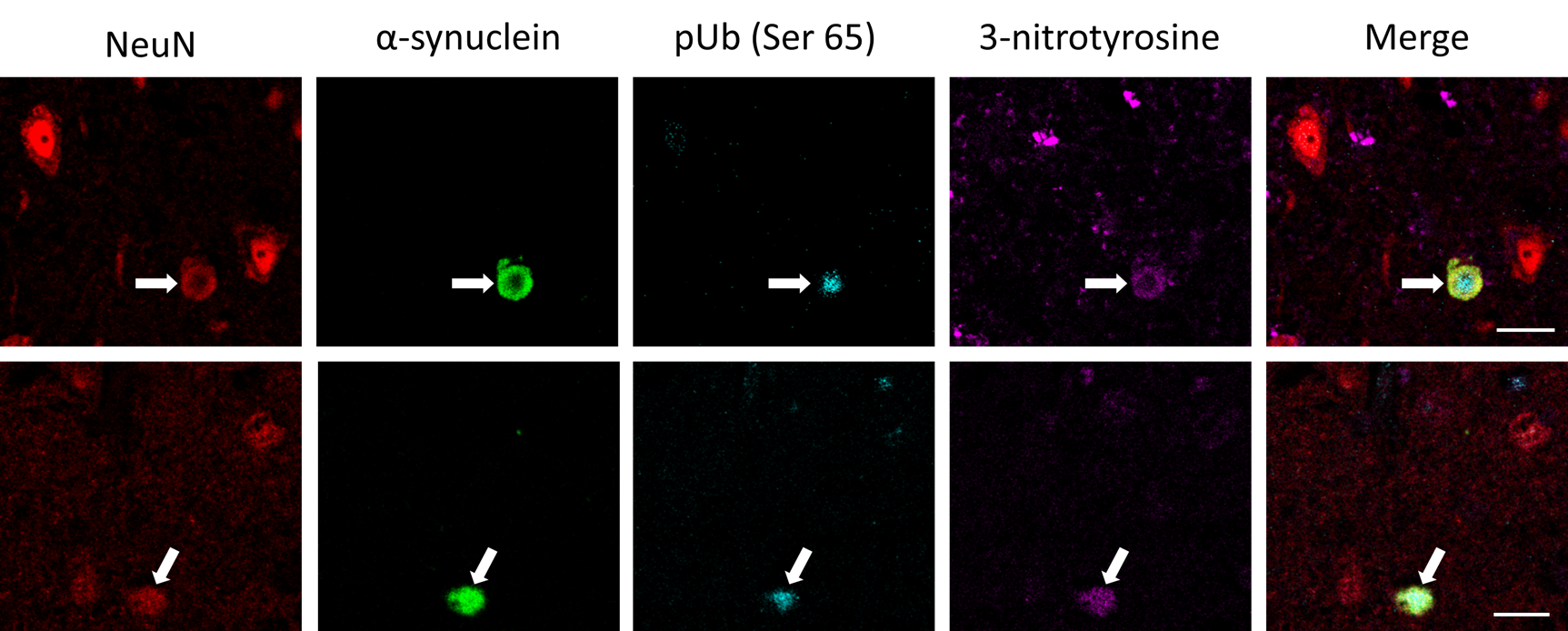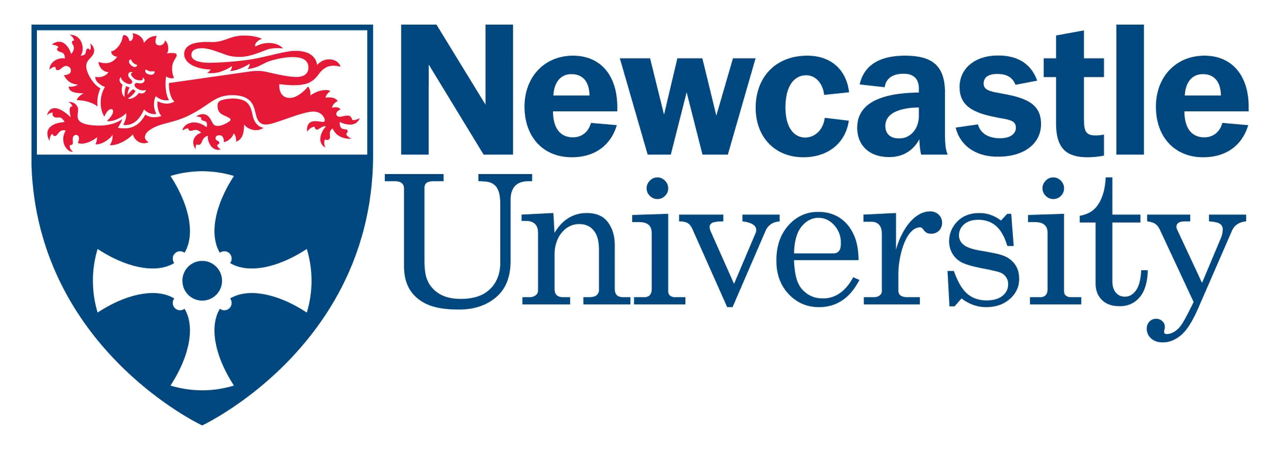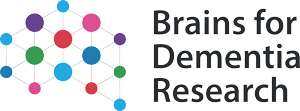The role of Lewy bodies in LBD
Lewy bodies are accumulations of the protein alpha-synuclein that are considered to be the defining pathological hallmark of LBD. Although Lewy bodies have long been thought to cause death of neurons underlying the symptoms of LBD, a large body of neuropathological research has identified no relationship between Lewy bodies and cell death. Some notable examples from external labs are found below:
Abundance of Lewy bodies does not correlate with neuronal loss in incidental Lewy body disease
Abundance of Lewy bodies does not correlate with nigral neuronal loss in Parkinson's disease
Neuronal loss in the substantia nigra occurs before it develops Lewy bodies
Based on these studies, we started to investigate differences between neurons with and without Lewy bodies. We first focused on mitochondria, as mitochondrial dysfunction has long been suggested to a major pathological mechanism in LBD. These studies have so far found that the neurons with the greatest respiratory chain deficiencies in LBD are those without Lewy bodies, suggesting a potentially protective role for Lewy bodies. Researchers in the Netherlands found that Lewy bodies appear to contain damaged mitochondria, which led us to speculate that Lewy bodies may perform a protective role by encapsulating damaged mitochondria that would otherwise damage neurons. Our recent work has developed these ideas further, reporting that Lewy bodies contain cellular waste and trafficking proteins that provides further evidence that Lewy bodies are formed to encapsulate cellular waste, perhaps in the context of deficient autophagy, thus implying a protective role.

Figure 1: Neurons with Lewy bodies labelled by Syn-F2 (A.i.-A.v.) contain low levels of the mitochondrial Complex I marker, NDUFB8. In contrast, lower levels of NDUFB8 are observed in a nearby neuron without a Lewy body (C.i.-C.v.).
We are currently working to explore mitochondrial-specific autophagy, typically termed mitophagy, in LBD. We have noted that autophagic mitochondria are found at the earliest stages of alpha-synuclein aggregation and are often present surrounding Lewy bodies, so we are interested in the role these may play in Lewy body formation. This work forms the basis of Searlait's PhD project, where she will investigate the role of deficient mitophagy in Lewy body formation, using a combination of confocal microscopy and molecular biology to characterise the phenotype of mitochondria in LBD, then utilise this information to "reverse engineer" Lewy bodies in vitro.

Figure 2: Lewy bodies contain autophagic mitochondria labelled by ubiquitin phosphorylated at serine 65 (pUb Ser 65), suggesting damaged mitochondria are a component of Lewy bodies.







